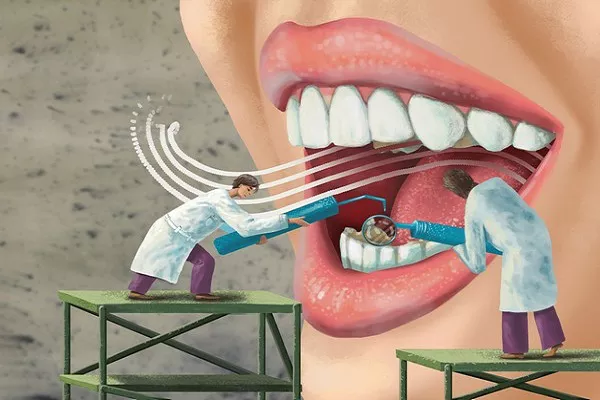Dental fillings are common restorative procedures used to treat cavities and restore damaged teeth. While fillings are effective in resolving dental issues, some individuals may experience tooth sensitivity after getting a filling. This post-filling sensitivity can be concerning, but it is essential to understand the reasons behind it and how to manage the discomfort. In this article, we will explore the causes of tooth sensitivity after getting a filling, common triggers, and effective ways to alleviate and manage this sensitivity.
Normal Post-Filling Sensitivity
Tooth sensitivity after getting a dental filling is quite common and often temporary. Sensitivity occurs when the tooth’s nerves are irritated during the filling procedure, leading to discomfort. The level of sensitivity varies depending on factors such as the type of filling material used, the size of the cavity, and an individual’s pain threshold.
Causes of Post-Filling Tooth Sensitivity
Several factors contribute to tooth sensitivity after a filling:
a) Filling Material: Different filling materials can cause varying degrees of sensitivity. Tooth-colored composite resin fillings may lead to more sensitivity compared to amalgam fillings due to the bonding process.
b) Tooth Preparation: The process of preparing the tooth for the filling can irritate the nerves and pulp, causing sensitivity.
c) Temperature Changes: After the filling, the tooth may become more sensitive to temperature changes, such as hot or cold foods and beverages.
d) Bite Misalignment: If the filling is not properly aligned with the opposing tooth, it can create excessive pressure during biting, leading to sensitivity.
e) Dentin Exposure: The filling process may result in temporary exposure of dentin (the sensitive layer beneath the enamel), causing sensitivity.
f) Enamel Weakening: The bonding agents used in tooth-colored fillings may initially soften the enamel, leading to sensitivity until the enamel fully rehardens.
Tips to Manage Post-Filling Sensitivity
Fortunately, there are several ways to manage and reduce post-filling sensitivity:
a) Desensitizing Toothpaste: Use a desensitizing toothpaste specifically formulated to alleviate tooth sensitivity. These toothpastes contain ingredients that block nerve impulses and reduce sensitivity.
b) Avoid Extreme Temperatures: Limit consumption of extremely hot or cold foods and beverages to minimize sensitivity.
c) Soft Diet: If the sensitivity is significant, stick to a soft diet to reduce pressure on the affected tooth during chewing.
d) Over-the-Counter Pain Relief: Over-the-counter pain relievers like ibuprofen can help reduce sensitivity and discomfort. Always follow the recommended dosage and consult your dentist if the pain persists.
e) Fluoride Treatment: Your dentist may recommend a fluoride treatment to strengthen the enamel and reduce sensitivity.
f) Proper Oral Hygiene: Maintain excellent oral hygiene practices, including gentle brushing with a soft-bristled toothbrush and flossing carefully.
How Long Will the Sensitivity Last?
The duration of post-filling sensitivity varies among individuals. In most cases, the sensitivity subsides within a few days to a couple of weeks. However, if the sensitivity persists or worsens, consult your dentist for a thorough evaluation.
When to Seek Dental Attention
While post-filling sensitivity is generally normal, there are instances when you should seek dental attention:
a) Prolonged Sensitivity: If the sensitivity lasts longer than two weeks, consult your dentist to rule out any underlying issues.
b) Severe Pain: If the pain is severe or debilitating, it may indicate a problem that requires immediate attention.
c) Bite Problems: If you experience pain or discomfort when biting down, it may indicate a misaligned filling that needs adjustment.
d) Swelling or Infection: If you notice swelling or signs of infection around the filled tooth, contact your dentist promptly.
Prevention and Care
While post-filling sensitivity is common, some preventive measures can reduce its occurrence:
a) Regular Dental Check-ups: Regular dental check-ups are essential for early detection of dental issues and prompt treatment.
b) Address Cavities Early: Seek dental treatment as soon as you notice any signs of tooth decay to prevent extensive damage that may lead to increased sensitivity.
c) Proper Filling Technique: Choose an experienced dentist who employs proper filling techniques to minimize post-filling sensitivity.
Conclusion
Tooth sensitivity after getting a filling is a common occurrence, and it is usually temporary. Understanding the causes of post-filling sensitivity and following proper aftercare can help manage and alleviate discomfort. Desensitizing toothpaste, avoiding extreme temperatures, and maintaining excellent oral hygiene are effective ways to reduce sensitivity. While most cases of post-filling sensitivity resolve on their own, it is crucial to seek dental attention if the sensitivity persists or worsens. Regular dental check-ups and prompt intervention are essential for maintaining optimal oral health and a pain-free smile. By being proactive and informed, you can ensure a successful and comfortable filling experience and enjoy the benefits of restored dental health.
Related Topics:




























